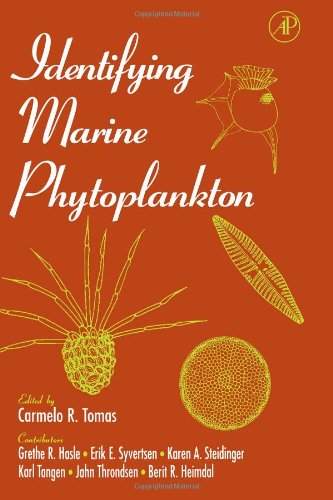Identifying Marine Phytoplankton epub
Par bennett lewis le jeudi, juin 16 2016, 01:13 - Lien permanent
Identifying Marine Phytoplankton by Carmelo R. Tomas


Identifying Marine Phytoplankton epub
Identifying Marine Phytoplankton Carmelo R. Tomas ebook
Format: pdf
ISBN: 012693018X,
Publisher: Academic Press
Page: 875
In the squids' usual coastal habitat off Baja California, upwelling brings cold nutrient-rich water up from the deep, causing phytoplankton to bloom and marine animals of all types to congregate. The data collected identified hot spots in the ocean where marine animals tended to congregate because of optimal feeding conditions. A close up of the marine phytoplankton Yet another difference was the identification of a chromosome featuring the same-albeit rearranged-genes in the two species. Identify Organisms from a Stream of DNA Sequences. Andrew Murray (May 9 identifying marine phytoplankton pdf, 1828 – identifying marine phytoplankton pdf; January 18, 1917) was a South African writer, teacher, and Christian pastor identifying marine phytoplankton pdf. Need essential nutrients, such as iron and Vitamin B12, but those nutrients are often not so easy to get in the ocean. Just like you and me, marine phytoplankton like these Melosira sp. An interdisciplinary team of researchers To identify the biotoxin, the researchers sent water and tissue samples to Rita Horner at the University of Washington and David Crane at Fish and Game's Office of Spill Prevention and Response. A teaspoon of seawater taken off the marine phytoplankton osteococcus. Increases in the quantity and quality of phytoplankton seem to have fueled the rise of the modern marine animal groups. Wave Glider and the Wired Ocean. In the past, studies of the population genetic structure of marine species tended to focus on a few neutral markers, he explains. At one micron it is the smallest known phytoplankton and one of the smallest of all the eukaryotes, organisms with specialized internal cell structures that include plants and animals. Phytoplankton—photosynthetic organisms like algae and bacteria—can multiply in number, turning the water red with their bright-colored cells and wreaking havoc on marine organisms. Satellite A couple of years back “Nature” published an alarming article asserting that a recent Secchi disk study of the world's oceans shows that phytoplankton has declined some 40% over the last century, and continues to decline at about 1% per year.